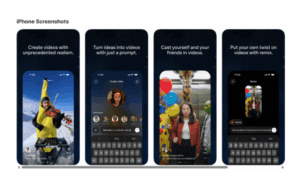Bali, Indonesia – June 11, 2025 – By Gregorius A Sinantong (Freelance Journalist)
Bali, long celebrated for its pristine beaches and vibrant culture, is now at the forefront of a connectivity revolution. As the island cements its status as a global hub for digital nomads and tourists, a seismic shift is underway in how travelers stay online. The rise of eSIM technology—a digital alternative to traditional SIM cards—is transforming mobile access, offering seamless connectivity without the hassle of physical swaps.
The eSIM Revolution: Why Travelers Are Making the Switch
Embedded SIM (eSIM) technology, once a niche feature, is now mainstream. Unlike physical SIM cards, eSIMs are built into devices, allowing users to activate data plans instantly via QR codes or apps. For Bali’s visitors—especially remote workers and frequent travelers—the benefits are undeniable:
- Instant activation: No more airport queues or passport scans at SIM kiosks.
- Dual SIM functionality: Keep a home number active while using local data.
- Eco-friendly: Eliminates plastic waste from disposable SIM cards.
Nadia, a UX designer from Amsterdam, recalls her arrival in Ubud: “I scanned a QR code mid-flight and had data before landing. It’s like traveling in 2030.”
Bali’s 5G Boom: Telkomsel Leads the Charge
Indonesia’s aggressive 5G rollout has made Bali a connectivity hotspot. Telkomsel, the nation’s largest telecom provider, now offers robust 5G coverage in key areas like Seminyak, Canggu, and Ubud, ensuring high-speed internet for video calls, streaming, and remote work.
Andrew, a freelance developer from Melbourne, notes: “I took a Zoom call from a Sanur beach warung with zero lag. A year ago, that was unthinkable.”
While competitors like XL Axiata and Indosat offer alternatives, Telkomsel’s infrastructure remains the backbone for most eSIM providers, ensuring reliability even in rural zones like Sidemen and Uluwatu.
Why eSIM Is the Best SIM Option for Bali in 2025
The shift to eSIM is more than just a tech trend—it’s a lifestyle upgrade for Bali-bound travelers. With digital onboarding, instant network connection, and compatibility with international numbers, eSIM offers a hassle-free experience tailored for modern mobility.
“Our goal is to make landing in Bali as seamless as sipping your first coconut,” says Giostanovlatto, founder of Hey Bali, one of the island’s affordable eSIM providers. “You no longer need to waste time bargaining at the airport or dealing with language barriers—just scan and surf.”
Tourists and remote workers increasingly value flexibility, and eSIM delivers just that—often bundled with competitive data plans and local support. For travelers who want to start exploring rather than troubleshooting, the digital SIM is quickly becoming a no-brainer.
Are Physical SIM Cards Obsolete? Not Yet—But Their Days Are Numbered
Despite eSIM’s surge, physical SIMs persist—for now. Some travelers still rely on them due to:
- Device limitations: Older or budget Android phones lack eSIM support.
- Local preferences: Tourists unfamiliar with eSIMs may opt for in-store purchases.
However, drawbacks like long airport queues, mandatory passport registration, and opaque data packages are driving the decline. Vendors at Ngurah Rai International Airport report a 60–70% drop in physical SIM sales since mid-2024.
Challenges: Compatibility and Awareness
The transition isn’t flawless. Key hurdles include:
- Device restrictions: iPhones (XS and newer), Samsung Galaxy (S20+), and Google Pixels support eSIM, but many mid-range phones don’t.
- User education: Some travelers don’t realize their phones are eSIM-compatible.
- Network switching: While eSIMs allow carrier changes, coverage varies in remote areas.
Providers like Hey Bali and Airalo are addressing these gaps with multilingual support and real-time troubleshooting, ensuring smoother adoption.
The Future: A World Without Physical SIMs?
Bali’s eSIM boom mirrors a global trend. Analysts predict 76% of smartphone connections will use eSIMs by 2030, driven by convenience and eco-conscious travel.
Luis, a Mexican travel vlogger, sums it up: “Five years ago, I begged strangers to help me find a SIM stall. Now, I scan a code and go live instantly.”
As Bali paves the way, the question isn’t if physical SIMs will vanish—but when.



































